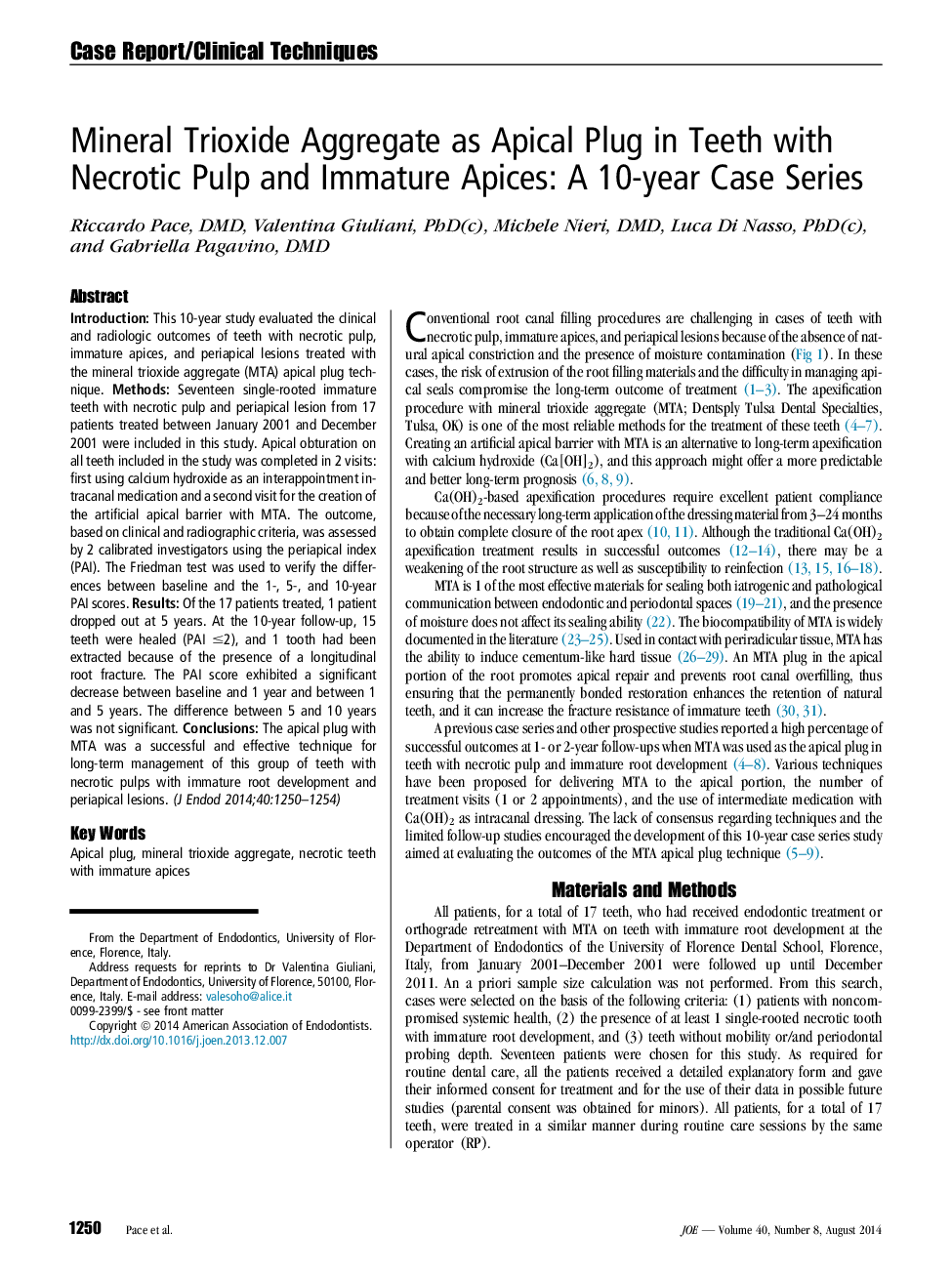| Article ID | Journal | Published Year | Pages | File Type |
|---|---|---|---|---|
| 3146760 | Journal of Endodontics | 2014 | 5 Pages |
IntroductionThis 10-year study evaluated the clinical and radiologic outcomes of teeth with necrotic pulp, immature apices, and periapical lesions treated with the mineral trioxide aggregate (MTA) apical plug technique.MethodsSeventeen single-rooted immature teeth with necrotic pulp and periapical lesion from 17 patients treated between January 2001 and December 2001 were included in this study. Apical obturation on all teeth included in the study was completed in 2 visits: first using calcium hydroxide as an interappointment intracanal medication and a second visit for the creation of the artificial apical barrier with MTA. The outcome, based on clinical and radiographic criteria, was assessed by 2 calibrated investigators using the periapical index (PAI). The Friedman test was used to verify the differences between baseline and the 1-, 5-, and 10-year PAI scores.ResultsOf the 17 patients treated, 1 patient dropped out at 5 years. At the 10-year follow-up, 15 teeth were healed (PAI ≤2), and 1 tooth had been extracted because of the presence of a longitudinal root fracture. The PAI score exhibited a significant decrease between baseline and 1 year and between 1 and 5 years. The difference between 5 and 10 years was not significant.ConclusionsThe apical plug with MTA was a successful and effective technique for long-term management of this group of teeth with necrotic pulps with immature root development and periapical lesions.
